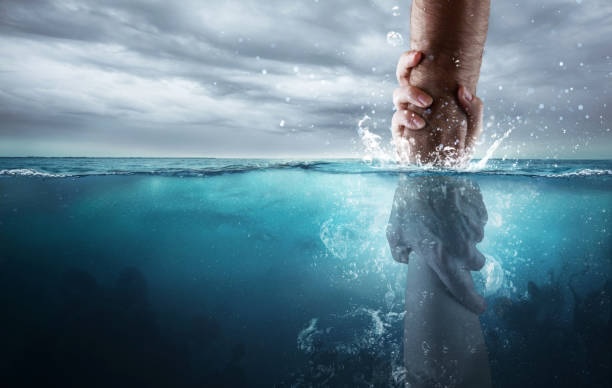A sudden and deadly flood razed Central Texas on July 4 when 20.33 inches of rain over a 24 hour period caused the Guadalupe River to rise 29 feet and surge through the Texas Hill Country. At least 129 fatalities are now confirmed, and approximately 170 adults and children remain missing. The flooding was caused by the equivalent of 4 months of rain falling in the early morning hours upon bone-dry soil, and the Lone Star State’s failure to fund its own flood warning system near a summer campground locals call “Flash Flood Alley.”
On Sunday, Tropical Storm Chantal dropped another 12 inches of rain on North Carolina in 24 hours; On Tuesday, at least three people were killed by flash floods sweeping through Ruidoso, New Mexico; and in Chicago nearly 5 inches of rain fell in just 90 minutes submerging vehicles, flooding basements, and causing residents of Garfield Park to join hands in a civilian water rescue.
Rainmaker Technology, a California-based company, confirmed it conducted a cloud seeding operation in the Central Texas on July 2. But meteorologists explain that cloud seeding — injecting dry ice particles to super cool clouds and produce precipitation — had no connection to the flash floods that struck two days later. That was due to the remnants of Tropical Storm Barry colliding over the Guadalupe River. However, posts suggesting a connection between the deadly floods, a small cloud seeding operation, and a lack of preparedness by local, state and federal lawmakers were widely shared on social media.
Despite consigning blame, the data is now speaking for itself. In less than a week, there were at least four 1-in-1,000-year rainfall events across the United States. Though the floods in Texas, New Mexico, Illinois and North Carolina have passed, the forecast is calling for an uptick of catastrophic events around the planet.
The ancient Chinese, Hindu, and Greek civilizations had flood narratives first, and the Judeo-Christian version followed suit by depicting a catastrophic deluge to cleanse the earth. Resetting the planet in its pre-mortal phase of watery chaos, one man is commissioned to re-build a more perfect microcosm. Therein lies the question before them all, and a concern we share with them now. Whom, among us, is responsible for our common welfare?
Questions about oversight, warning systems, and recent reductions to the federal workforce were put to the president when touring the devastation on Friday. Donald Trump replies to CBS Texas’ Marissa Armas:
I think everyone did a great job under the circumstances. I just have admiration for the job that everybody did…But only a bad person would ask a question like that. I don’t know who you are, but only a very evil person would ask a question like that.
“Only a very evil person would ask a question like that.”
After years of severe drought, dozens of atmospheric rivers deluged California with record-breaking precipitation in the winter of 2023, burying mountain towns in snow, flooding valleys with rain, and setting the stage for landslides. The year 2024 followed with a record hot summer and record-dry fall tendering tinder-dry vegetation + Santa Ana winds which resulted in the Southern California wildfires of 2025.
Hydroclimate Whiplash — a rapid swing between intensely wet and dangerously dry weather — has increased by 66 percent globally since 1950, and has recently been speeding up. According to the National Oceanic and Atmospheric Administration (NOAA) 2024 Annual Climate Report, the combined land and ocean temperature has increased at an average rate of 0.11° Fahrenheit per decade, or about 2° F in total since 1850. Global temperature is projected to warm by about 2.7° degrees Fahrenheit by 2050, and 3-7 degrees Fahrenheit by 2100, according to NOAA.
The real culprit of Whiplash events is the Atmospheric Sponge: a warmer atmosphere can suck up more water from soil and plants; a warmer atmosphere can hold more water vapor; and a warmer atmosphere can produce sudden torrential downpours that trigger floods, power outages, landslides. Poor drainage destroys crops, overtakes sewers and spreads disease.
In 2024, there were 27 confirmed weather/climate disaster events in the United States, including: droughts, floods, severe storms, tropical cyclones, hurricanes and a wildfire. Some 568 people were killed, and the combined events caused $182.7 billion in damages, according to the National Centers for Environmental Information (NCEI).
Floods in Afghanistan, Enga Landslides, Typhoon Yagi, and Hurricane Helene were global climate disasters in 2024. Extreme weather events have cost the global economy more than $2 trillion over the past decade, according to NCEI. In "Only One Earth" Barbara Ward observes, "We have forgotten how to be good guests, how to walk lightly on the earth as its other creatures do.”
Science confirms that a range of sectors and processes contribute to global emissions. There is no single or simple solution to climate change. Focusing on electricity, transport, food, or deforestation alone is insufficient. Even within the energy sector — which accounts for almost three-quarters of greenhouse emissions — there is no simple fix. According to the Environmental Protection Agency (EPA), the transportation sector is the source of 29% of greenhouse gas emissions in the US; the Industrial sector emits 30% of the greenhouse gas emissions; and finally the commercial and residential sector’s burning of fossil fuels to heat and cool their commercial buildings and residential homes comes in at 31%.
Nearly 1 billion people are energy poor and don't have electricity, rendering the remaining 7 billion people around the world complicit in one form or other of burning fossil fuels and producing green house emissions, according to the EPA. This week, the flood stricken communities of Texas, New Mexico, Illinois and North Carolina joined the throng.
Trump has promised repeatedly — and as recently as last month — “to begin phasing out FEMA and bring disaster response management down to the state level.” Yet the president signed a disaster declaration by Sunday, and sent immediate financial assistance to 9 Texas counties to continue to search, rescue, recover and rebuild.
Whether assistance comes from local, state or the federal government is a policy discussion in play, but DHS Secretary Kristi Noem on Tuesday put it this way. “We as a federal government don’t manage these disasters—the states do. We are there only to assist their search, rescue and recovery.” But then waxed emotional when recounting her visit to Camp Mystic in Texas which was ravaged by floodwaters that killed at least 27 young campers and camp counselors.
“Just hugging and comforting people is what matters. It’s time for all of us in this country to remember that.” Surmising, masterfully, the very essence of the Chinese, Hindu, Greek, and Judeo-Christian flood narratives Noem commanded the room: “We were created to serve each other.”
Archives










